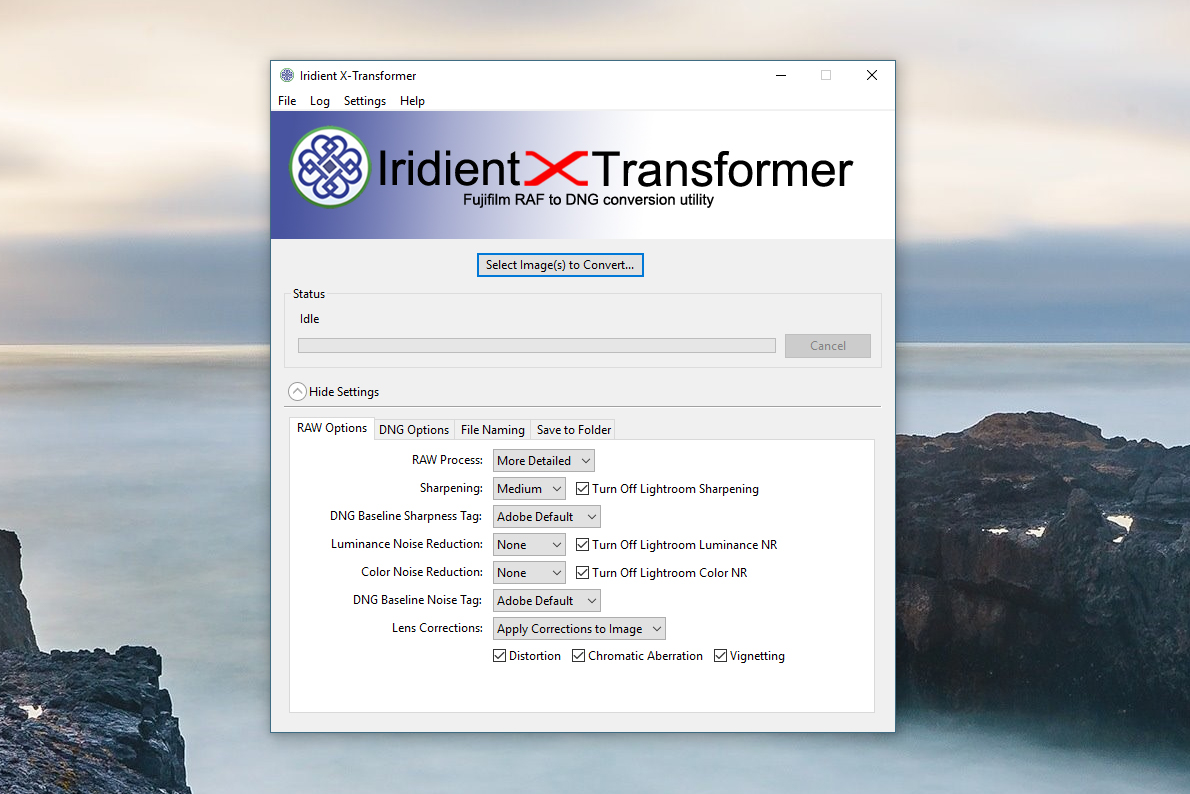
- #Best settings for iridient x transformer update
- #Best settings for iridient x transformer full
- #Best settings for iridient x transformer software
- #Best settings for iridient x transformer series
#Best settings for iridient x transformer software
The tool is currently in Beta, but since my initial post there have been several updates and the software is now in ‘Beta 3’. The reason this is helpful is because it side steps the Adobe RAF conversion process in Lightroom and gives you a better RAF rendering that what Adobe currently gives you. Iridient X-Transformer, for those who missed my initial post, is a tool from Iridient that uses their well known RAF conversion process to convert your Fujifilm RAW files into Adobe DNG files.
#Best settings for iridient x transformer update
It reminded me that I have yet to really do a followup to my Iridient Transformer post from back when the tool was first released, so I am here today with an update on this tool for those who prefer to stick with Lightroom.
#Best settings for iridient x transformer series
A while ago I wrote about Iridient’s new product, X-Transformer.A lot has been said about Capture One’s latest update and the improvements that it has brought to Fujifilm X series photographers who have decided to jump ship from Lightroom to Capture One.

It was only available for Windows at the time. I don’t have access to a Windows computer, but I did try it under parallels at the time, and I was impressed with the results. However, because it was just too clunky to work with under emulation, I didn’t do too much with it, as a mac version was promised.Ī few weeks later and the beta is now on it’s third iteration, and it’s finally available on the mac too. I tried it out for a bit over the weekend and I’m mostly impressed.
#Best settings for iridient x transformer full
I still haven’t done a full test yet, and so I’m not going to delve into the details too much. I’ve been having some computer trouble over the last week which has held my workload back a bit. I will do a full review int he near future, but for now, here are a few observations. In case you haven’t seen it before, here’s a quick overview of what X-Transformer actually does. It is a DNG converter targeted specifically at Fuji X-Trans shooters. It allows uses the demosaicing engine from Iridient Developer to convert your Fuji Raw files to DNGs using Iridient’s own engine. If you then import these converted DNGs into Lightroom you still get all the benefits of Lightroom’s raw processing, but with Iridient’s decoding.

In other words, if you have been unhappy with the way Lightroom decoded Fuji Raw files, this effectively solves the problem by converting to DNG and doing the demosaicing (the bit Lightroom has issues with) as part of the conversion. That’s probably not the most technically accurate description of what’s going on, but I didn’t want to make this too nerdy! In use, you basically set your options, select your raw files, and let the software batch convert them to DNG.


When using the software, you are presented with several options. At fist this seems like only a few pop-ups, but the combination of possible parameters adds up, making for a lot of ways you can configure the converter. You can decide to just use the application to demosaic the files, and apply the sharpening etc in Lightroom, or you can set it up to do some sharpening and noise reduction in the software and then add a little more in Lightroom. Alternatively, you could do all your sharpening and noise reduction in the software, and send a ready file to Lightroom.Īfter running several batches over the weekend, the approach that I’ve been taking is to turn everything off in X-Transformer, and just use it to demosaic the files. This way you can use Lightroom’s sharpening and noise reduction as you normally would. When sharpening images converted with this software they behave more like you would expect from a traditional camera, and you can add quite a bit of sharpening in Lightroom before they start to show artifacting.Īnd I mean: as you normally would with a normal camera, because you don’t have to use the approaches you otherwise would when sharpening X-Trans files. The conversion process itself can take a bit of time. It does seem to make full use of your computer’s processors though. On my 12 Core mac pro, all 12 cores were maxed out when using it, and it used all available ram too.


 0 kommentar(er)
0 kommentar(er)
